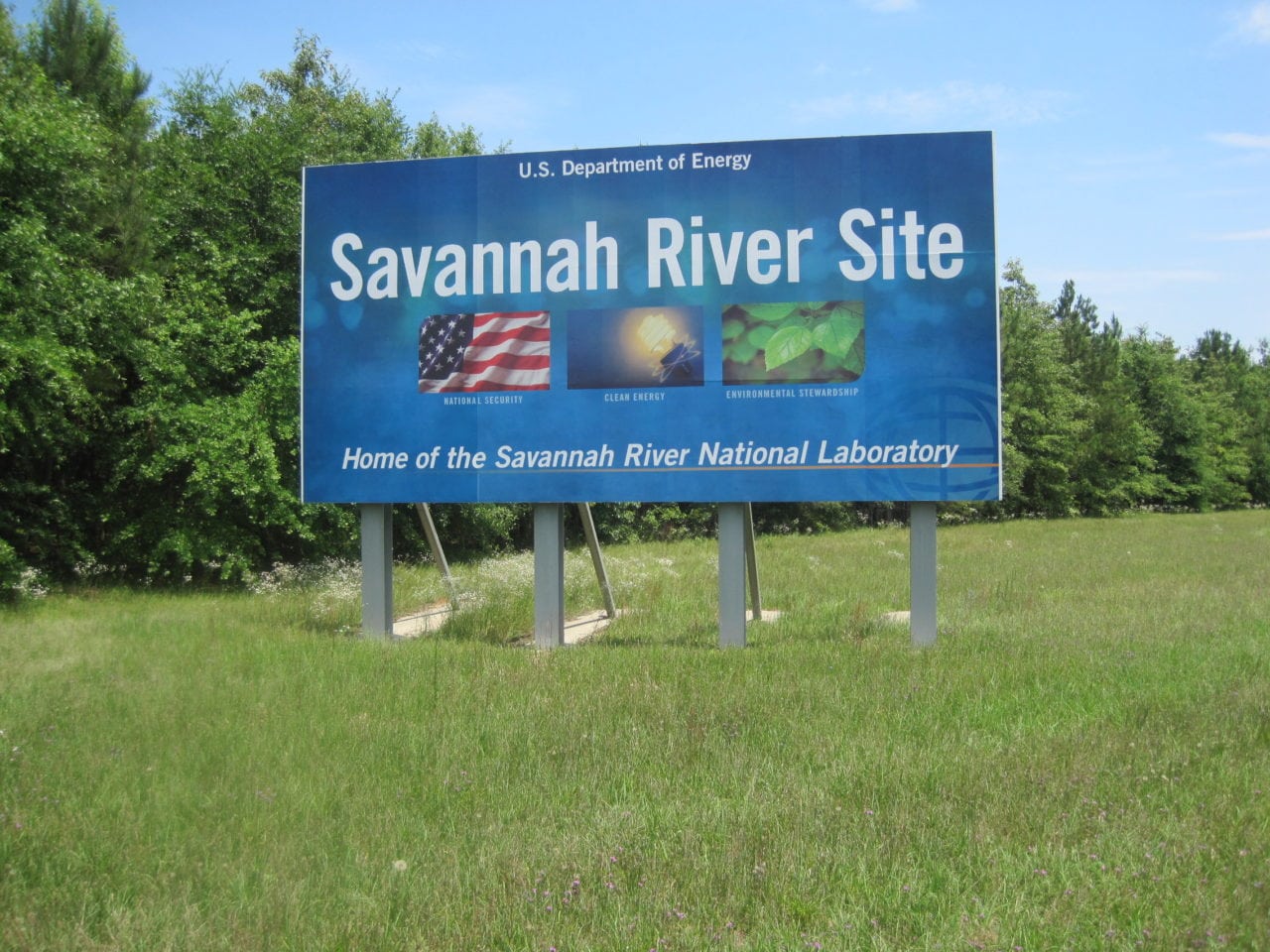
The future of the Savannah River Sites nuclear-weapons mission should become clearer by next month, when the Department of Energy plans to release a draft solicitation for the contract that includes the site’s work for the National Nuclear Security Administration (NNSA).
To date this year under a series of short-term budgets, the NNSA is spending the annual equivalent of about $330 million on weapons programs at the facility in Aiken, S.C. The work is conducted by Savannah River Nuclear Solutions: the Fluor-led contractor team that is now in the final option period of a 10-year, $9.5-billion contract to manage the Savannah River Site and its national laboratory.
The Department of Energy’s Office of Environmental Management (EM) manages the contract, along with a separate deal to treat decades’ worth of liquid nuclear waste that piled up at SRS during the Cold War arms race. The arrangement occasionally provokes speculation that DOE might contractually separate the NNSA mission from the nuclear cleanup program, but that does not appear to be happening, yet.
“SRS is a multi-program site that involves various long-term missions for Environmental Management (EM) and National Nuclear Security Administration (NNSA),” reads the contract synopsis that hit the wires Feb. 28.
The Energy Department plans to host would-be bidders for a site tour and one-on-one meetings in April, after it releases a draft solicitation for the work, according to the competition synopsis. Specifically, the agency said it plans to release the draft request for proposals some time between Friday, March 30, and Sunday, April 29.
The incumbent’s deal is set to expire July 31, but it could be extended. In its synopsis for the next Savannah River management pact, DOE said it plans to conduct a full and open competition: this usually takes about a year.
For the NNSA, SRS is a nuclear-materials hub for the agency’s weapons and nonproliferation programs. Including both missions, the agency spends around $660 million a year at the site. However, about half of that funds a plutonium disposal mission that is outside of the scope of the SRS management and operations contract around which the familiar cast of industry players is now sniffing.
On the weapons side of the house, the NNSA depends on SRS for its supply of tritium: a gas extracted from irradiated nuclear fuel that increases the potency of thermonuclear weapons. Refilling a warhead’s tritium reservoir is one way the DOE branch can maintain the warhead’s destructive power as part of its nuclear explosive package age.
Excluding work not covered by the SRS management and operations contract, the NNSA spent roughly $330 million at the Savannah River Site in fiscal 2017: a level of funding that essentially carried over into fiscal 2018 under stopgap budget bills called continuing resolutions.
For 2019, the NNSA proposes spending nearly $375 million on SRS weapons programs. The Tritium Sustainment program anchored by the SRS Tritium Extraction Facility takes up the single largest share of that money. The NNSA spends a little over $100 million on Titium Sustainment now and wants to nearly double that amount in the budget year beginning Oct. 1 as part of the Donald Trump administration’s plan to ramp up spending on the nuclear arsensal.
The figures above exclude funding the agency requested for the Mixed Oxide Fuel Fabrication Facility under construction at SRS by CB&I AREVA MOX Services. The NNSA has wanted to cancel this plant since 2016 and start building different SRS facilities to dispose of the 34 metric tons of plutonium that were supposed to be processed into commercial nuclear reactor fuel by the project.
Construction related to the plutonium disposal mission at SRS is funded through the NNSA’s Office of Defense Nuclear Nonproliferation. The agency is spending just over $330 million on such construction now and wants to pare that back to around $275 million in 2019. The new level of funding would support winding down the facility and starting work on its replacement: upgrades to SRS’ K-Area that would eventually allow DOE to dilute the plutonium now slated for reprocessing and eventually bury the material at the deep underground Waste Isolation Pilot Plant in New Mexico.